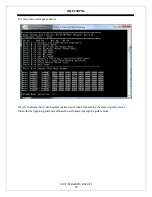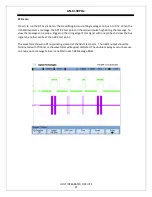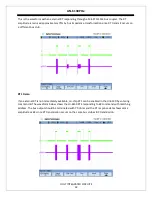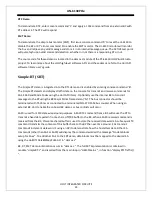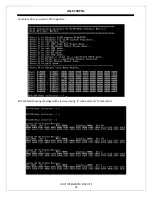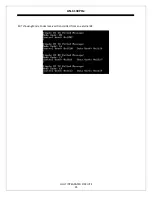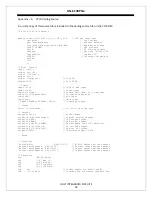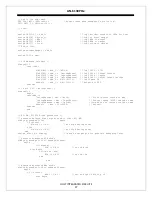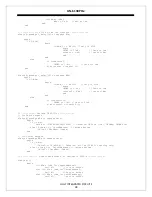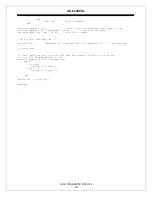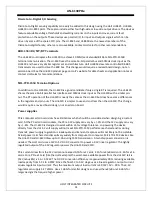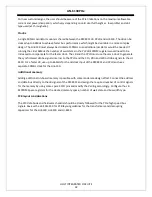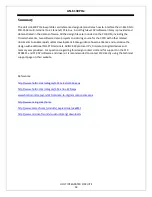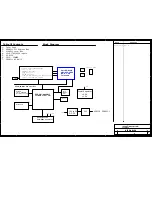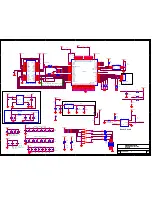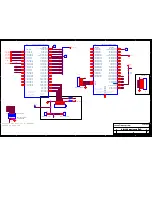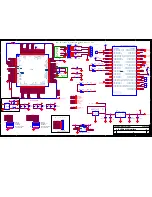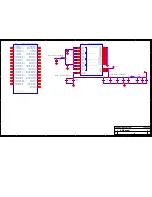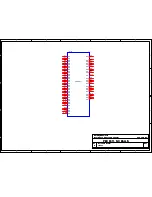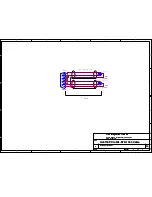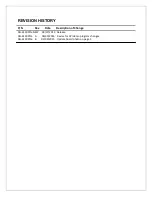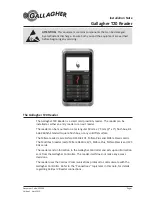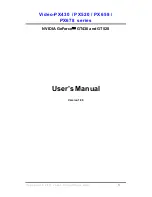
AN-6130PCIe
HOLT INTEGRATED CIRCUITS
31
Discrete-to-Digital I/O Sensing
Discrete-to-Digital sensing capability can easily be added to this design using the Holt HI-8425, HI-8426,
HI-8430 or HI-8431 parts. These also include either four high-side or low-side output drivers. The devices
feature adjustable voltage thresholds and wetting currents on the inputs and over-current fault
protection on the outputs. These devices use parallel I/O for input and outputs signals which can be
driven by some of the spare CPLD pins. The HI-8425 and HI-8430 are the newest members of the
Discrete-to-digital family, others are also available. Contact Holt sales for other recommendations.
EBR-1553 BC/MT/RT Terminals
The HI-6140 could replace the HI-6130 to achieve 10 Mbit/sec Extended Bit Rate MIL-STD-1553B
terminal communication. The HI-6140 uses the same 16-bit parallel bus and 50MHz clock input as the
HI-6130 and has a very similar register set and architecture. Holt HI-4853 slew-rate controlled RS-485
transceivers are used to drive the EBR bus. This change would require a revised board design, not an
add-on board. See the HI-6140 product page on Holt’s website for data sheets and application notes or
contact Holt sales for recommendations.
MIL-STD-1553 Terminal Options
In addition to the HI-
6130, the HI-6120 is a good candidate if only a single RT is required. The HI-6120
shares the same 16-bit parallel bus interface and 50MHz clock input as the HI-6130 with a similar pin-
out. The RT operation of the HI-6120 is nearly the same as the HI-6130 but does have some differences
in the registers and pin-outs. The HI-6120 is simpler to use and cost less than the HI-6130. This change
would require a revised board design, not an add-on board.
Power supplies
PCIe computer add-in card slots have limitations which should be considered when designing a custom
card. At the PC add-in card sockets, the PCIe 3.3V supply can vary by +/- 9% and the 12V supply can vary
by +/- 8%. The HI-6130 is designed to work within a 5% voltage tolerance, so powering the device
directly from the slot 3.3 volt supply will not meet MIL-STD-1553 performance characteristics during
transmit; power supply regulation is inadequate and transient response will most likely not be suitable.
Actual power rail characteristics will vary widely from computer to computer. MIL-STD-1553 devices like
the HI-6130 and HI-6120 draw up to 0.9A during 1553 transmission. A two step power conversion is
needed. The Holt card uses a 12V to 5V DC-DC converter to power a 3.3V linear regulator. The tightly
regulated output of the 3.3V regulator powers the HI-6130 and CPLD.
PCIe current draw from the 12V rail cannot exceed 0.5A for x1 cards, 2.1A for x4/x8 cards or 4.4A for x16
cards. For a PCIe x1 card (like the Holt example) the worst-case available power from the slot 12V rail is
(12V minus 8%) x .5A = 5.52W. The DC-DC conversion efficiency is approximately 90%, reducing available
load capacity from 5.52 to 4.97W. Since the final 5V to 3.3V stage uses a linear regulator, output current
equals regulator input current. Thus the maximum output load current is 4.97W / 5V = .99A. The 3.3V
regulator can supply 3.27 Watts. Use x1 slots for smaller designs and use either x4/x8 or x16 slots for
larger designs that require higher power.




